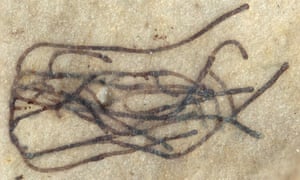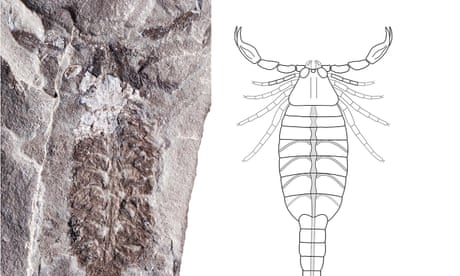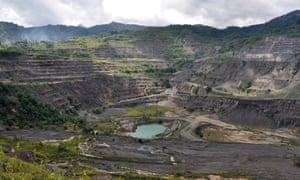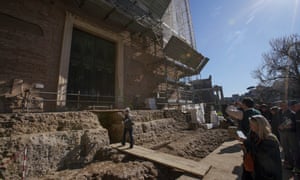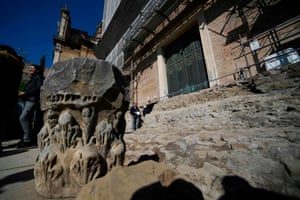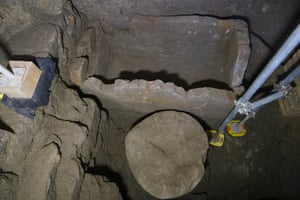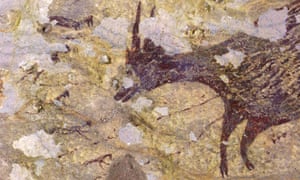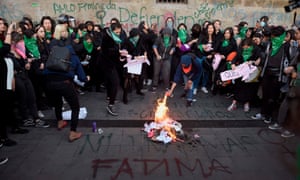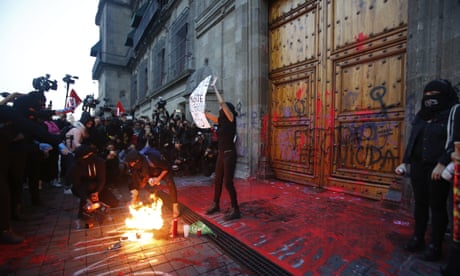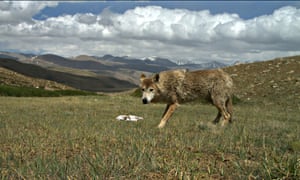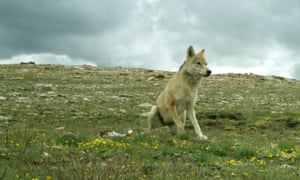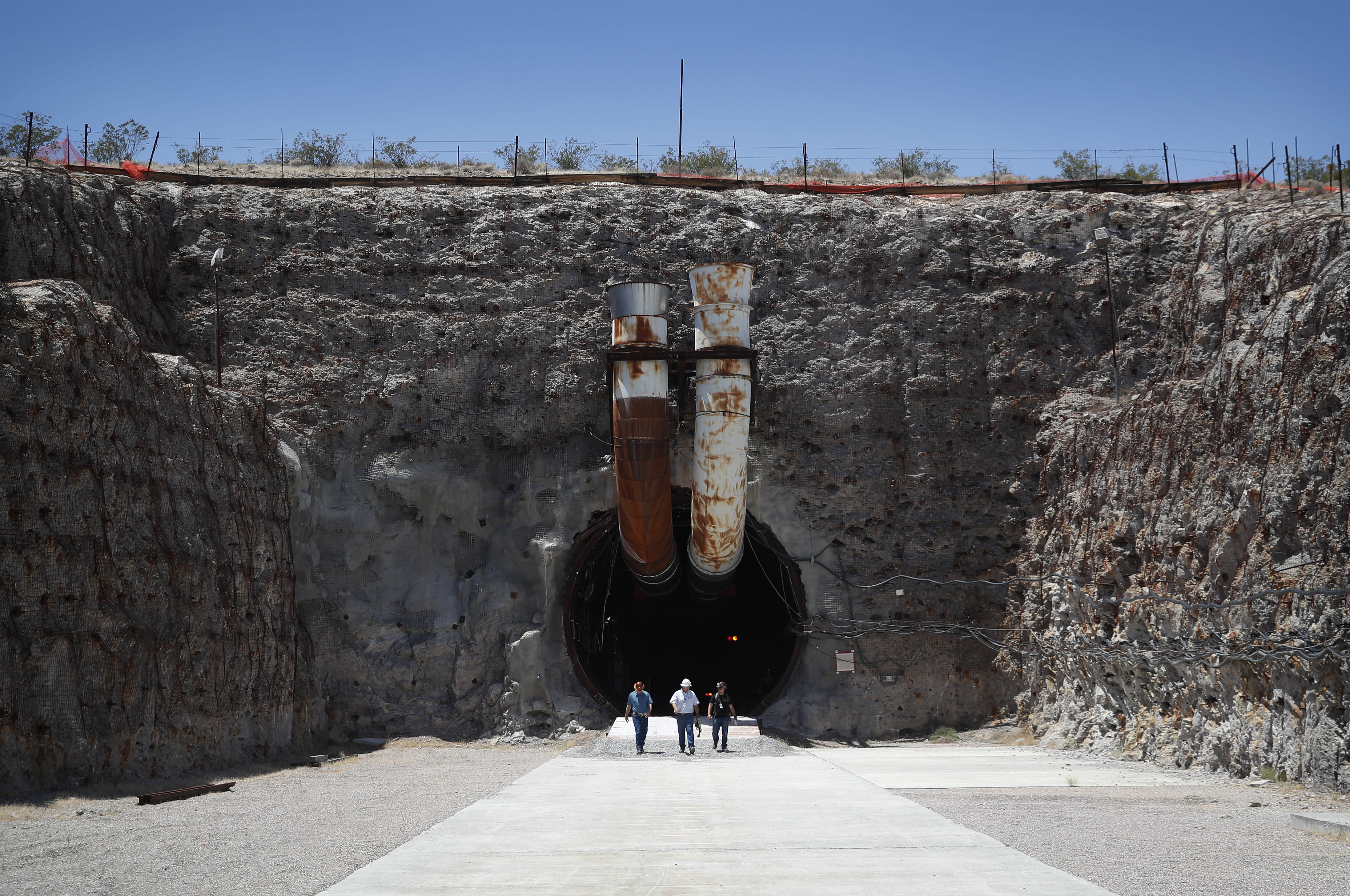Hindu and Communist groups clash ahead of US president’s visit, with further conflict over controversial citizenship laws
Associated Press Tue 25 Feb 2020

Protesters throw stones at police in eastern Delhi on Monday.
Five people died in violence across the capital.
Photograph: EPA
Delhi has been hit by a series of deadly protests ahead of a visit by President Donald Trump, with Hindu nationalist and communist groups holding pro- and anti-US demonstrations in the Indian capital.
Three protesters were killed during clashes in several parts of the Indian capital, the Press Trust of India news agency reported, and police said one officer died in the violence. An unnamed health official said on Tuesday that another two had died, Reuters reported.
Eleven police were injured as they were hit by rocks trying to separate rival groups, New Delhi police said.

'Namaste Trump': India welcomes US president at Modi rally
On the pro-US side, Hindu nationalists held a prayer meeting in which they put a vermilion mark on the forehead of Trump in a poster, blessing him, while a priest chanted Hindu hymns wishing Trump success in his endeavour for strong ties with India.
Vishnu Gupta, president of Hindu Sena, said: “Through a fire ritual we are invoking God to bless America and India.’’ He said he wanted Trump and Modi to fight radical Islam and the spread of terrorism.
Elsewhere in New Delhi, dozens of supporters of the Communist party of India carried a banner reading “Trump go back”. Anti-Trump street demonstrations also broke out in the cities of Gauhati in the north-east, Kolkata in the east and Hyderabad in the south.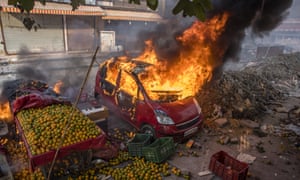
The cars of protesters opposing a new citizenship law are set ablaze in Delhi, India. Photograph: Yawar Nazir/Getty Images
Doraisamy Raja, the Communist party’s general secretary, accused Modi of succumbing to US pressure on access to the Indian market rather than protecting India’s interests.
American dairy farmers, distillers and drugmakers have been eager to break into India, the world’s seventh-biggest economy, but talks between Washington and Delhi appeared to have fizzled. Still, the two leaders are scheduled to announce agreements at a news conference on Tuesday, capping off Trump’s two-day visit.
Also in Delhi, police fired tear gas as clashes erupted between hundreds of supporters and opponents of a new citizenship law that provides fast-track naturalisation for some foreign-born religious minorities but not Muslims.
Critics say the country is moving toward a religious citizenship test. At the rally in Ahmedabad, Trump praised India’s history of religious tolerance, saying many faiths “worship side by side in harmony”.
The protesters blocked a busy road in a north-eastern district of Delhi, replicating similar sit-ins in several parts of India since the law was passed in December.
Police used tear gas as the rival groups hurled rocks at each other in the area on Monday and set some houses, shops, vehicles and a petrol pump on fire. Police closed access to two metro stations in the area.
Delhi’s highest elected official, Arvind Kejriwal, tweeted that the violence was “very distressing”.
The New Delhi television news channel said authorities deployed paramilitary forces to defuse the situation.
Delhi has been hit by a series of deadly protests ahead of a visit by President Donald Trump, with Hindu nationalist and communist groups holding pro- and anti-US demonstrations in the Indian capital.
Three protesters were killed during clashes in several parts of the Indian capital, the Press Trust of India news agency reported, and police said one officer died in the violence. An unnamed health official said on Tuesday that another two had died, Reuters reported.
Eleven police were injured as they were hit by rocks trying to separate rival groups, New Delhi police said.

'Namaste Trump': India welcomes US president at Modi rally
On the pro-US side, Hindu nationalists held a prayer meeting in which they put a vermilion mark on the forehead of Trump in a poster, blessing him, while a priest chanted Hindu hymns wishing Trump success in his endeavour for strong ties with India.
Vishnu Gupta, president of Hindu Sena, said: “Through a fire ritual we are invoking God to bless America and India.’’ He said he wanted Trump and Modi to fight radical Islam and the spread of terrorism.
Elsewhere in New Delhi, dozens of supporters of the Communist party of India carried a banner reading “Trump go back”. Anti-Trump street demonstrations also broke out in the cities of Gauhati in the north-east, Kolkata in the east and Hyderabad in the south.

The cars of protesters opposing a new citizenship law are set ablaze in Delhi, India. Photograph: Yawar Nazir/Getty Images
Doraisamy Raja, the Communist party’s general secretary, accused Modi of succumbing to US pressure on access to the Indian market rather than protecting India’s interests.
American dairy farmers, distillers and drugmakers have been eager to break into India, the world’s seventh-biggest economy, but talks between Washington and Delhi appeared to have fizzled. Still, the two leaders are scheduled to announce agreements at a news conference on Tuesday, capping off Trump’s two-day visit.
Also in Delhi, police fired tear gas as clashes erupted between hundreds of supporters and opponents of a new citizenship law that provides fast-track naturalisation for some foreign-born religious minorities but not Muslims.
Critics say the country is moving toward a religious citizenship test. At the rally in Ahmedabad, Trump praised India’s history of religious tolerance, saying many faiths “worship side by side in harmony”.
The protesters blocked a busy road in a north-eastern district of Delhi, replicating similar sit-ins in several parts of India since the law was passed in December.
Police used tear gas as the rival groups hurled rocks at each other in the area on Monday and set some houses, shops, vehicles and a petrol pump on fire. Police closed access to two metro stations in the area.
Delhi’s highest elected official, Arvind Kejriwal, tweeted that the violence was “very distressing”.
The New Delhi television news channel said authorities deployed paramilitary forces to defuse the situation.
